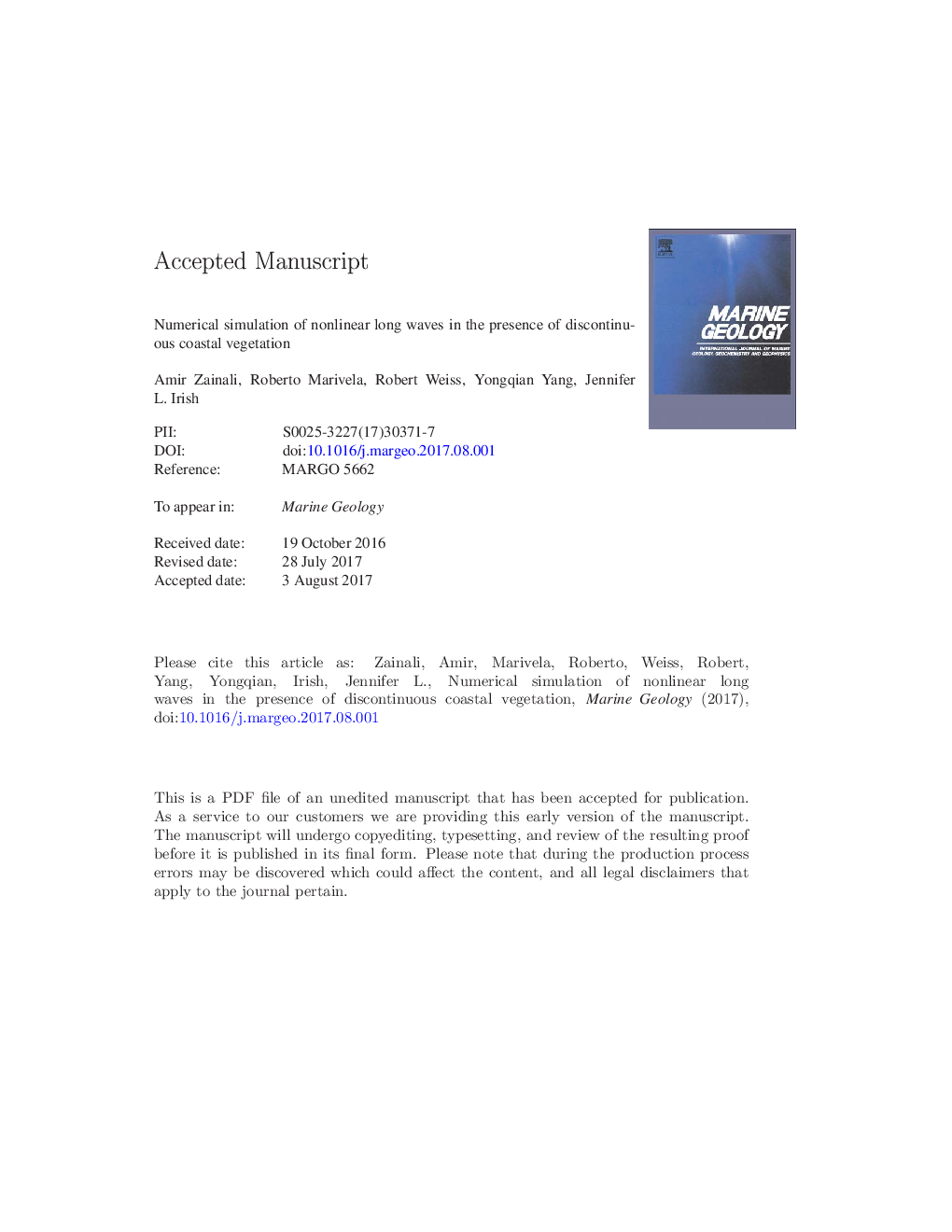| Article ID | Journal | Published Year | Pages | File Type |
|---|---|---|---|---|
| 8912028 | Marine Geology | 2018 | 35 Pages |
Abstract
We presented numerical simulations of long waves, interacting with arrays of emergent cylinders inside regularly spaced patches, representing tsunamis interacting with discontinuous patchy coastal vegetation. We employed the fully nonlinear and weakly dispersive Serre-Green-Naghdi equations (SGN) until the breaking process starts, while we changed the governing equations to nonlinear shallow water equations (NSW) at the vicinity of the breaking-wave peak and during the run-up stage. We modeled the cylinders as physical boundaries rather than approximating them as macro-roughness friction. Our results show that the cylinders provide protection for the areas behind them. However they might also cause amplification in local water depth in those areas. The presented results are extensively validated against the existing numerical and experimental data. Our results demonstrate the capability and reliability of our model in simulating wave interaction with emergent cylinders.
Related Topics
Physical Sciences and Engineering
Earth and Planetary Sciences
Geochemistry and Petrology
Authors
Amir Zainali, Roberto Marivela, Robert Weiss, Yongqian Yang, Jennifer L. Irish,
